
Product test
The Google Pixel 10 Pro is just good – no frills, no fuss
by Michelle Brändle

Adobe has created a camera app that uses artificial intelligence to analyse, isolate and edit elements in the photo, much like Instagram filters. But there's so much more.
Adobe's latest mobile app - Photoshop Camera - is available for a limited test audience. Let's take a look at this "AI-driven camera app that puts the magic of Photoshop in your hands". The app is probably the most fascinating I've seen this year, even if it still has some major issues.
First, the major hurdle: in the current version, leaked through a developer channel, you need an Adobe Creative Suite account to use the app, which means it costs at least CHF11.85 per month, a price that could nonetheless change once the app's final release is scheduled for June 2020.
Photoshop Camera does nothing more than apply filters to your photos before shooting. There are three modes for this:

To this end, the application has 17 filter profiles, each of which provides between five and seven filters, divided by theme: "Pop Art", "Adobe Max", "Double Expo" or "Analog".
The app's minimalist user interface encompasses the shutter release and filter selection at the bottom, the filter library, the settings button and the toggle function between the main photo and selfie module at the top.
According to Adobe, the app is only available on the following devices: Pixel3/XL, Pixel4/XL, Samsung S9/S9+, Samsung S10/S10+, Samsung Note 9, Samsung Note 10/10+ and iPhones above iPhone 6s. After a three-minute trial, however, the application also works on a Huawei P30 Pro, which certainly dispels the theory that only Snapdragon or Apple phones are compatible. That said, the app isn't stable, crashing from time to time, which is to be expected given that it's still under development. On the Google Pixel 3 XL, it claims to be a little more stable.
On launching the app, you quickly notice that Photoshop Camera needs a good dose of power. Because it calculates the effects of the finished photo on the screen in real time, the app oscillates on both a Google Pixel 3 with 4GB of RAM, a Huawei P30 Pro with 8GB of RAM and a Samsung Galaxy Note 10+ with 12GB of RAM. It works on all phones, but is not particularly fast. On the plus side, all phones are warm after prolonged use of the app.
This is impressive. Finally an app that really exploits all the system resources of the brands' flagship phones by pushing them to their limits.
For the user, the app is very simple. For the machine, on the other hand, it represents a major achievement requiring a high degree of abstraction and ultra-fast understanding of a photo. The application divides a photo into layers, edits it while it is in use and refines this initial editing stage when it is viewed for the first time. All this is done by a machine that understands neither three-dimensionality nor gradation. Teaching an application to do this is complex. The fact that the app implements this functionality at the same time as Photoshop Camera is impressive and almost shows in passing what smartphone photography of the future could look like.
After launching the app and selecting a filter - for example "Night Shift" 3 out of 5 - you are prompted to point the camera at an object with a sky. "Find a sky" then appears on the screen. As soon as the camera detects something that might be a sky, it replaces it with a gigantic moon in the live preview.
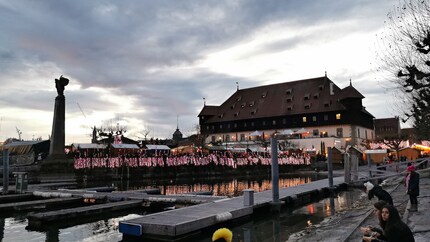
This filter works much better in daylight than in darkness or at night, as the contrasts between earth and sky are more pronounced. Indeed, as the saying goes, at night, all cats are grey, and it's not Cat's Eyes that will tell us otherwise.
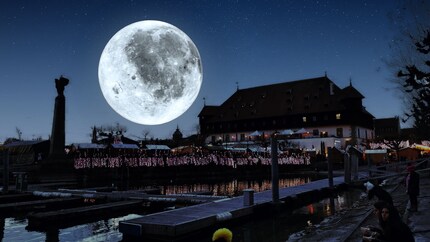
According to the EXIF data, this photo was taken at 4:42pm. The result is particularly good despite a still imperfect application. With fine transitions such as clouds, the camera still struggles.


The interesting thing is that you can see the application in full calculation. Before you press the shutter button, you can see pretty much what the photo software will calculate later. While the iPhone X had similar capabilities at the time and calculated entire backgrounds from the image, you couldn't see them live on screen. You'd take a picture, the camera would calculate in the background and hopefully you'd get a decent result. The iPhone only did this with faces that all look more or less the same; a nose, two eyes and a mouth, usually in the same area. But a sky is something else entirely, and requires much more understanding on the part of the machine.
What's not bad is adjusting the foreground and creating a more or less convincing day-for-night shot, i.e. a shot taken during the day but meant to represent night, a common technique in the film world, as it's easier to shoot during the day than at night.
Photoshop Camera can also process faces using the "Find a Face" feature. The software then searches for eyes, mouth, nose. Here, the application generally replaces backgrounds and modifies face colours.
That doesn't sound spectacular. Snapchat does it too with its dog filter. Pretty much every app for that matter. Photoshop Camera simply makes it more complex and less kitschy.
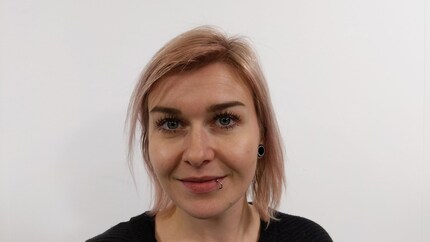

On a neutral background, this works perfectly, as the app manages to distinguish people from the world around them. In the presence of backgrounds, it becomes a little more difficult, but in the worst case scenario, the result is still acceptable. The 'Pop Art 1' filter is particularly well suited to this purpose, as it turns the subject of the photo blue and the background orange. It's the best way to see how the camera thinks.
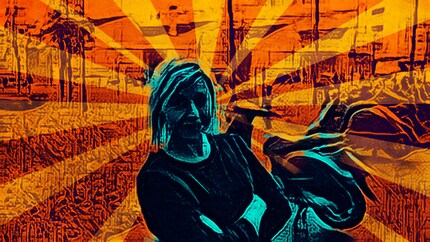
The third type of filter is one that simply adjusts certain colour values. In comparison, they're pretty boring and unremarkable. A food filter? Yes, we get each other.

For completeness: the original photo.

It can be ignored. I don't know why any app would offer it. If Instagram wants to keep jumping headlong into this, that's their problem, but Adobe can do better.
Photoshop Camera images are not stored as JPGs in internal memory. In other words, your normal photo backup application, such as Google Photos, does not access the photos. This is because they can be edited after they have been taken. So I suspect the files are stored somewhere in PSD format, a multi-layered Photoshop file. A quick search on the phone for "PSD" and other common Photoshop and Adobe formats doesn't turn up any photos. Nor do they go into the cloud, because they're not in your Adobe library, which syncs between devices. What's more, the application works perfectly, even without a network connection.
This opens the door to application data management. Adobe still has a lot of work to do on this. The beta application is functional, but it still has room for improvement.
To recap: Adobe stores photos, divided into layers, somewhere.
Although Photoshop Camera can analyse photos, it's not possible to download or edit images from other applications. Shame. Then there's the problem of exporting data. There are two types of export.
To be able to process the data further and possibly generate several versions of a photo - for example, one with Night Shift 3 and the other with Spectrum 1, but from the sameThis technique converts the layer photo into a JPG with the effects you've just defined and exports the shot to a normal phone gallery. Fortunately, the original JPG from the camera is also exported. On the other hand, "Share" creates a copy with the current effects without touching the photo layer.
When it comes to data management, we've seen better, especially if the app is supposed to be aimed at creative people. There's a reason why the app is a bit pretentious: the filters are trivial and boring after three uses.
But the possibilities for data management are not.
But the app's possibilities are almost limitless. Imagine an app that neatly separates foreground from background, an app that already has an understanding of colour values. Isn't that great? As a photographer, you no longer have to manually divide a photo into several layers, because the software already does that for you. Instead, you can concentrate on the creative aspect of photo editing and tedious, imprecise manual work becomes unnecessary.
But the problem is that Photoshop Camera is still very limited and you, as the user, can't access the data, which thus leads to this type of situation:
I took a photo of Jeanine.
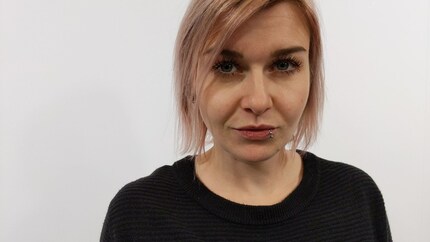
As a filter, I chose Spectrum 4.
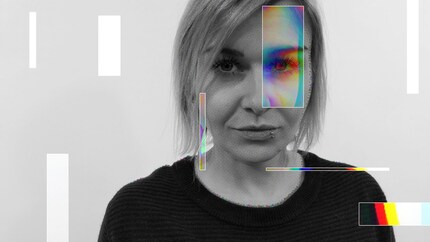
Having mistakenly pressed "Download", I can no longer set the filter. Shame!
However, the JPG is in high quality. So I can use it on the PC after exporting. Here's the result:
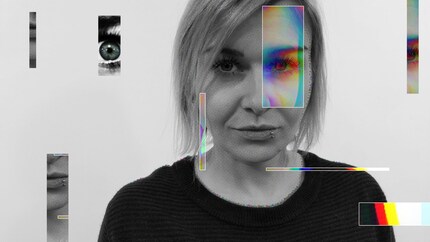
With some effort, you get something nice in the end, even without a second photo. But really, it sucks, because I had to look for creative solutions myself instead of being able to rely on my CHF 11.85-a-month app.
Adobe's Photoshop Camera is probably the most fascinating app I've seen in recent months. I'm not quite sure who the target audience is. For Instagrammers or hobbyists it's too expensive, for professionals not flexible enough or even superfluous. No one is going to agree to pay CHF 12 a month for two or three filters.
.
But an application capable of separating layers reliably, independently and in good lighting conditions... is worth its weight in gold. Especially in a professional context, it would save a lot of time and money. The few pre-installed filters can then remain as they are, provided that users are able to access and work with the data generated by the application. For example, if I can start a project with Spectrum 3, I save five minutes of work per photo. Then, when the filters become a little more flexible and let me move the coloured rectangles around as I please, creating the project will almost take care of itself.
In short, the Photoshop Camera app would be compelling if...
Installed as it is on my phone, the app, beta or not, is not for anyone. Nevertheless, the fact that an app can already do so much at beta stage suggests an exciting future for photo editing, and gives hope that it will require far less manual intervention in the future.
Journalist. Author. Hacker. A storyteller searching for boundaries, secrets and taboos – putting the world to paper. Not because I can but because I can’t not.

Product test
by Michelle Brändle

Product test
by Jan Johannsen

Product test
by Michelle Brändle